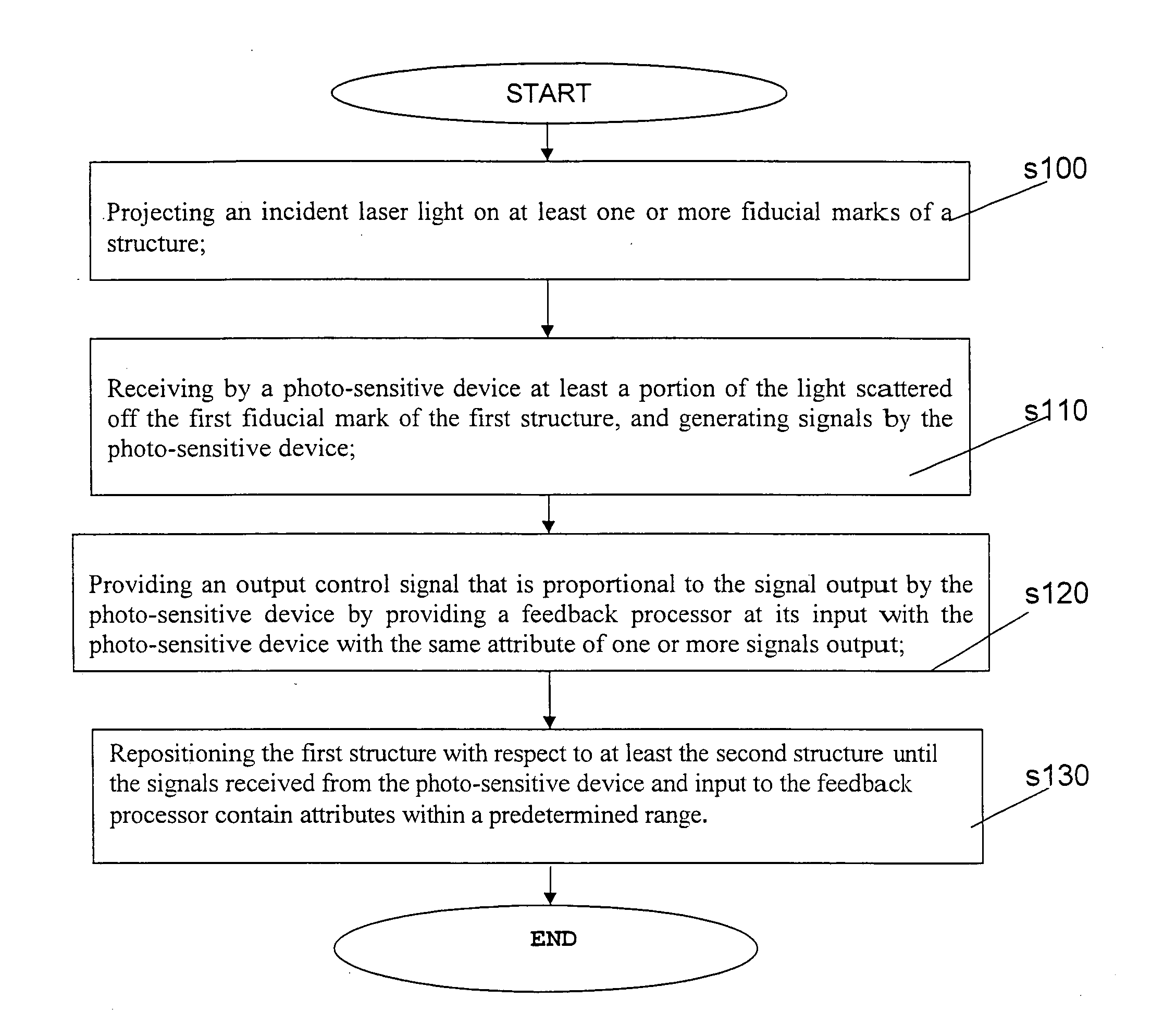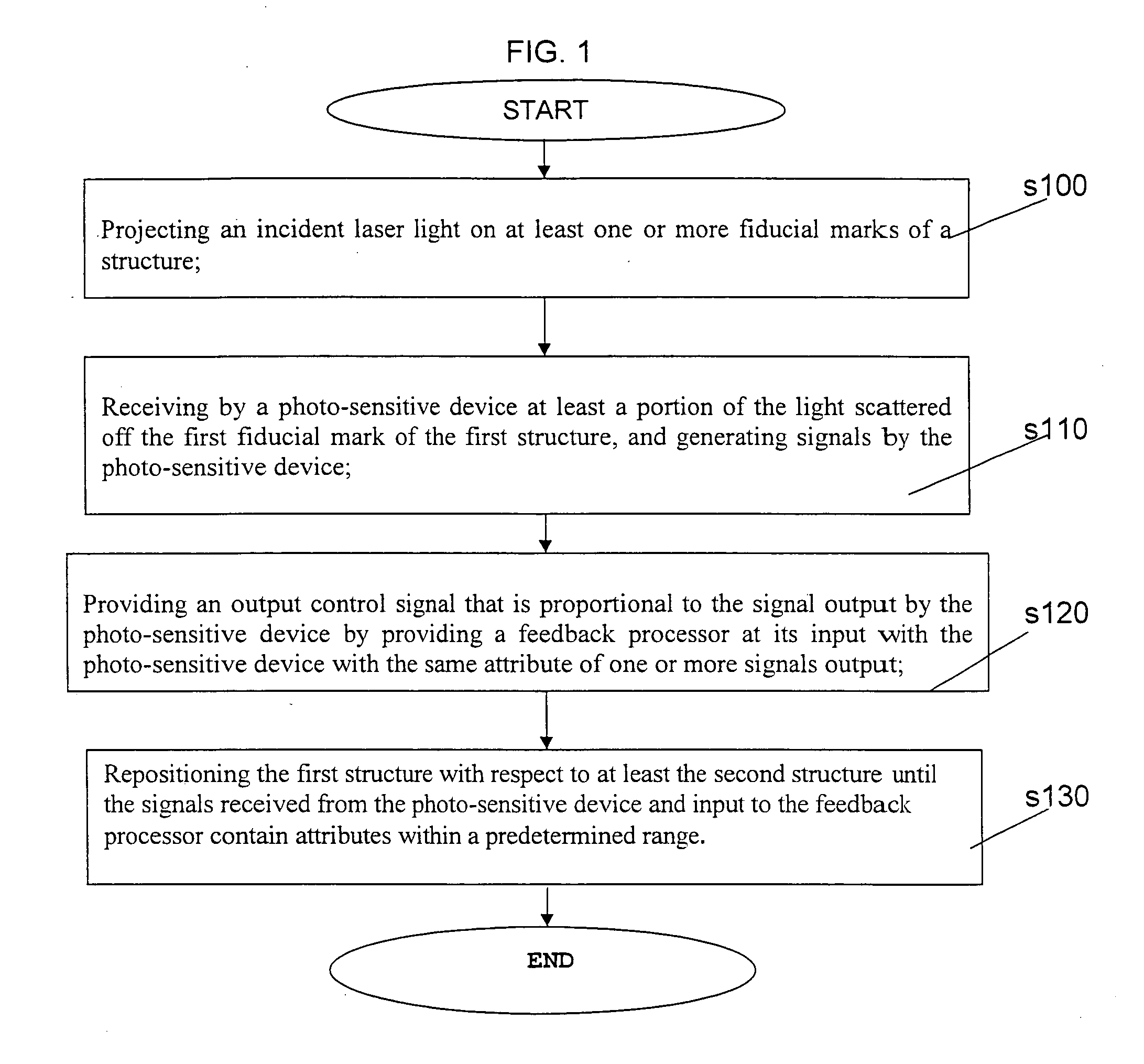Real-time, active picometer-scale alignment, stabilization, and registration in one or more dimensions
a picometer-scale, real-time technology, applied in the direction of calibration apparatus, instruments, optical radiation measurement, etc., can solve the problems of laser noise, art with drift, subsequently be some drift, etc., to achieve constant alignment and separation, high bandwidth, and yield picometer-scale precision and stability.
- Summary
- Abstract
- Description
- Claims
- Application Information
AI Technical Summary
Benefits of technology
Problems solved by technology
Method used
Image
Examples
Embodiment Construction
[0071]It is understood by a person of ordinary skill in the art that the drawings are presented for purposes of illustration and not for limitation. The embodiments shown and described herein do not encompass all possible variations of the arrangement of structure or the type of substances that can be quantified thereby. Therefore, an artisan appreciates that many modifications can be made within the spirit of the invention and the scope of the appended claims than the illustrative examples shown and described.
[0072]FIG. 1 provides an overview of a method of aligning two or more mechanically independent structures in time according to the present invention. At step 100, positioning two or more mechanically independent structures that are marked with at least one fiducial mark on each structure. At step 110, scattering a laser light beam against the at least one fiducial mark. At step 120, a photo-sensitive device positioned relative to the independent structures reads the scattered ...
PUM
 Login to View More
Login to View More Abstract
Description
Claims
Application Information
 Login to View More
Login to View More - R&D
- Intellectual Property
- Life Sciences
- Materials
- Tech Scout
- Unparalleled Data Quality
- Higher Quality Content
- 60% Fewer Hallucinations
Browse by: Latest US Patents, China's latest patents, Technical Efficacy Thesaurus, Application Domain, Technology Topic, Popular Technical Reports.
© 2025 PatSnap. All rights reserved.Legal|Privacy policy|Modern Slavery Act Transparency Statement|Sitemap|About US| Contact US: help@patsnap.com



